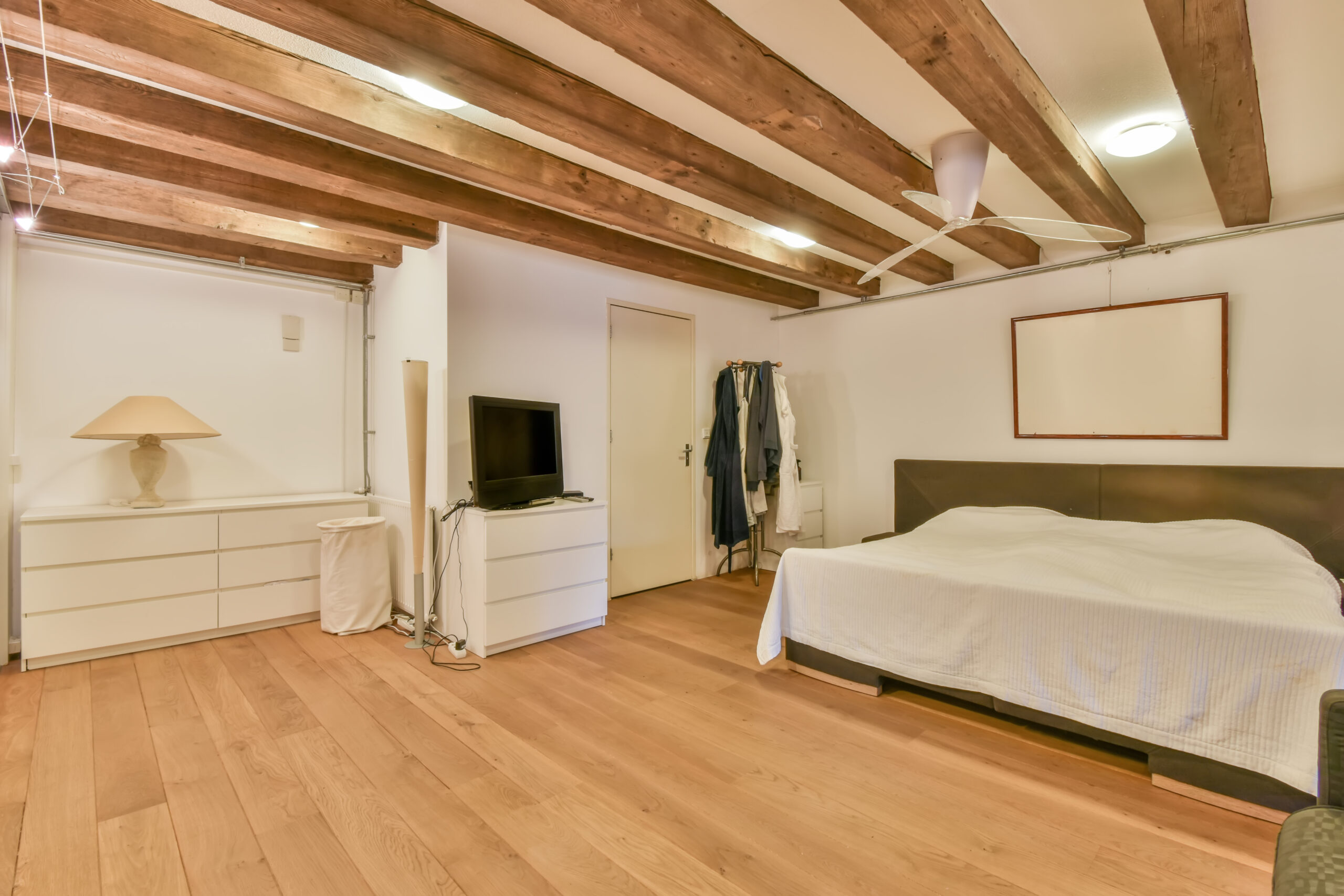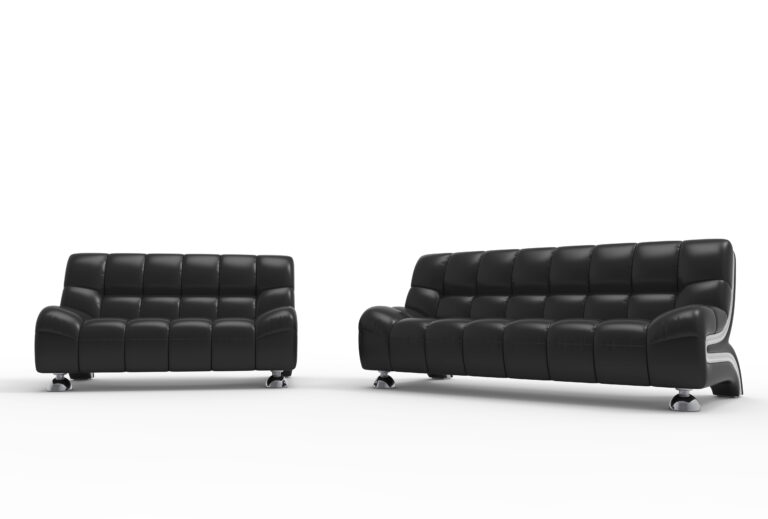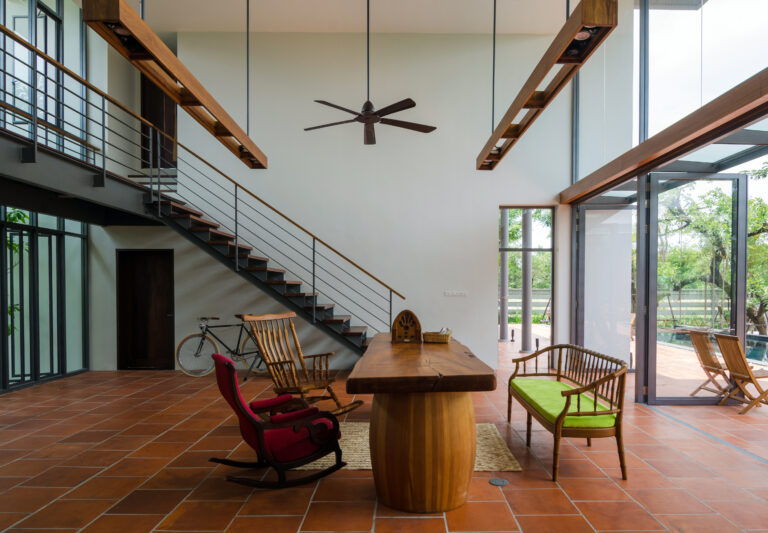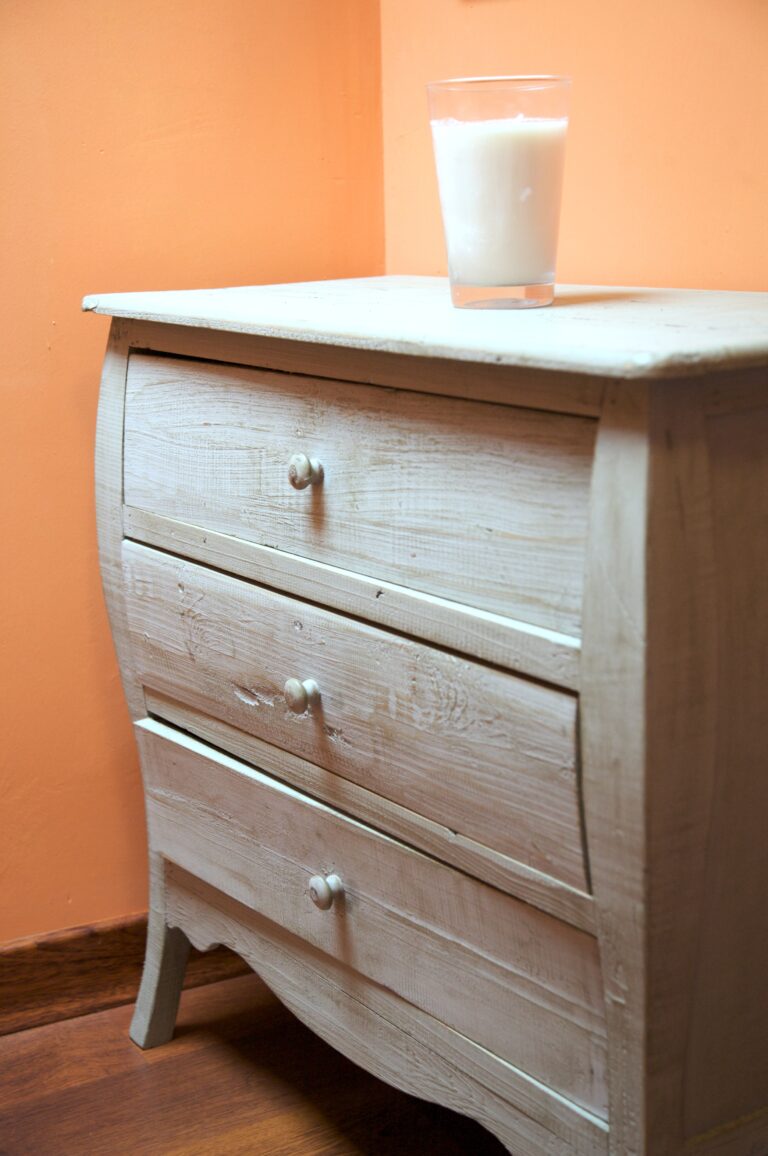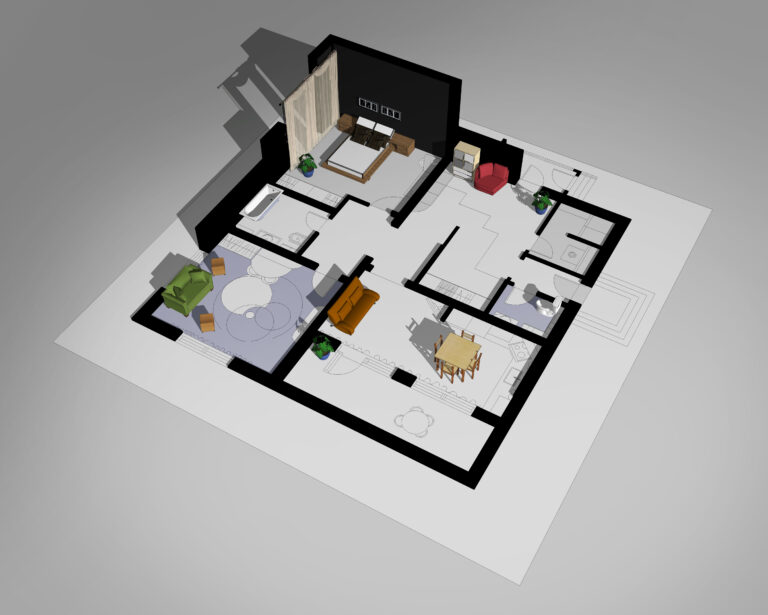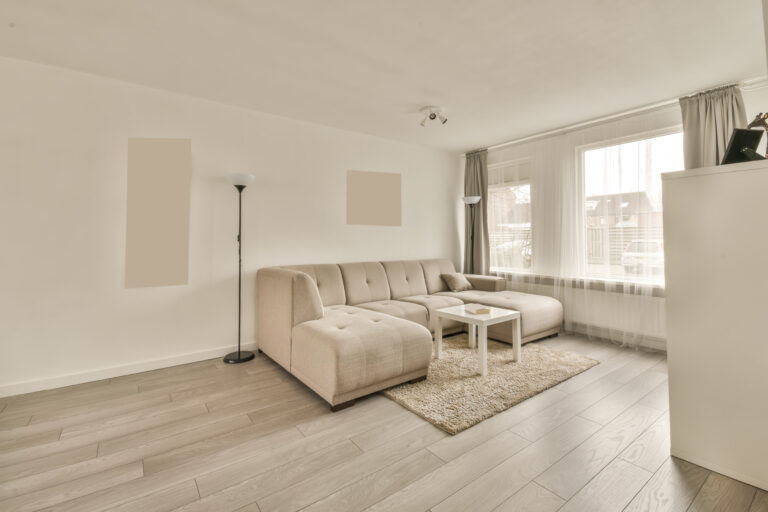Does All Bedroom Furniture Have to Match? Exploring Your Options
When decorating your bedroom, one of the most critical questions you must ask yourself is, “does all bedroom furniture have to match?”
Well, the short answer is no! It doesn’t have to. However, there are a few caveats.
If you want a cohesive look throughout the space and want to ensure that everything works harmoniously, then matching your bedroom furniture is a sure way to achieve this.
There are plenty of ways to mix and match pieces without sacrificing design integrity. From learning how various furniture styles can complement each other, understanding color coordination principles, and ensuring that everything works harmoniously, this article will explore what goes into creating an aesthetically pleasing yet unique environment in your home.
So if you’re wondering whether or not all bedroom furniture has to match – keep reading!
Table of Contents:
- Introduction
- Bedroom Furniture Styles
- Mixing and Matching Furniture
- Color Coordination
- Conclusion
- FAQs about Does All Bedroom Furniture Have to Match
- Conclusion
Introduction

Whether you’re a furniture enthusiast or just looking for ways to spruce up your home, this blog post will provide helpful tips and tricks on how to choose the right bedroom furniture style, mix and match pieces for a unique look, and coordinate colors that bring out the best in your space.
A few considerations:
Bedroom Furniture Inspiration
When selecting bedroom furniture styles, there are many options available today.
From traditional wood designs with intricate carvings and detailed finishes to modern minimalistic metal frames with sleek lines – you can find something that suits any taste.
Hence before you start to furnish your bedroom, consider what type of atmosphere you want in your room when choosing between different styles; if you prefer an airy feel, then opt for lighter materials such as wicker or rattan, while darker woods like mahogany create a more classic ambience.
Additionally, consider how much storage space is needed so that all items can be neatly tucked away without taking up too much floor area.
Mixing and Matching Furniture
Mixing different types of bedroom furniture is one way to create an exciting look in any room.
You could try pairing traditional wooden bed frames with contemporary nightstands or combining rustic dressers with modern chairs.
These combinations add depth and character while maintaining a cohesive overall design aesthetic.
Don’t be afraid to experiment by mixing textures, such as leather couches paired with velvet armchairs or glass-top tables combined with woven rugs.
These elements work together beautifully when done correctly.
Color Palette Coordination
The key element when coordinating colors is finding shades that complement each other without being too overwhelming or underwhelming simultaneously – this creates harmony within the room’s design scheme, which helps set off its pieces even further.
Start by picking two primary hues from existing furnishings, then use accent colors sparingly throughout – try adding pops of color through pillows, curtains, wall art, etc., but don’t go overboard otherwise, it’ll become too busy visually speaking (and potentially headache-inducing.).
Lastly, remember not every piece needs matching exactly – varying shades within similar tones help keep things interesting yet balanced overall, so have fun experimenting until achieving desired results.
Section Summary
Furniture decor doesn’t have to be complicated or intimidating; it’s all about finding what works best for both personal preference and lifestyle needs alike.
By considering various factors such as style choices, mixing and matching pieces appropriately, plus color coordination techniques, anyone can quickly transform their bedrooms into stylish havens they’ll love spending time in day after day, no matter their budget size or skill level required.
From classic to modern, many different bedroom furniture styles can create a unique and inviting space. In the next section, we will explore how these various styles can help you decide if all your bedroom furniture needs to match.
Key Takeaway: By considering style choices, mixing and matching pieces appropriately, and color coordination techniques, you can quickly transform your bedroom into a stylish haven that suits your taste and lifestyle needs.
Bedroom Furniture Styles
Bedroom furniture comes in various styles, from traditional to modern and contemporary.
Traditional bedroom furniture is often characterized by its ornate details, such as intricate carvings or curved lines. This style can create an elegant look that feels timeless and classic.
Modern bedroom furniture typically features clean lines and minimalistic designs, perfect for creating an elegant atmosphere. Contemporary bedroom furniture combines elements of both traditional and modern styles to create something unique and eye-catching.
This style is excellent for those who want their bedrooms to stand out from the crowd while still feeling comfortable and inviting.
No matter which style you choose, it is crucial to ensure that all your pieces work together harmoniously so that your room looks cohesive rather than cluttered or mismatched. Consider adding accent pieces, such as throw pillows or artwork, that tie into the overall design scheme of your space for a polished look.
From traditional to modern, bedroom furniture styles come in various designs and materials. Mixing and matching can effectively create the perfect look when it comes to furnishing your bedroom.
Don’t let mismatched bedroom furniture be the bane of your existence. Find pieces that work together harmoniously to create a stylish and inviting look. #BedroomFurniture #DecorGoals Click to Tweet
Pairing Furniture, Textures, and Palettes
Mixing and matching furniture can be a great way to create an exciting and unique look in your bedroom. You can achieve a cohesive style that reflects your taste with the right pieces while still creating visual interest.
The key is to choose complementary pieces that will work together to create a unified look.
When mixing and matching furniture, choose one or two main pieces as the room’s focal points.
These could be statement beds, armoires, dressers, or accent chairs.
Once you have chosen these items, consider adding smaller accents such as nightstands, side tables, or lamps for balance and texture. It’s important to keep color coordination in mind when choosing accent pieces; try to stick with similar tones so everything looks harmonious.
When it comes to materials, mix textures like wood grains and metals for added dimension in the space.
For example, if you have chosen a wooden bed frame with metal detailing on its headboard, pair it with metal nightstands or side tables for contrast yet continuity throughout the room design scheme.
You can also add pops of color through accessories like throw pillows or artwork, which will help tie all of your elements into one cohesive look without being too matchy-matchy overall.
Finally, don’t forget about lighting. Lighting is essential when designing any bedroom – not only does it provide illumination, but it also helps set the mood. Try incorporating different types of lighting, such as wall sconces around mirrors or table lamps next to reading nooks for additional ambiance within your space.
With careful consideration and attention paid to details like colors, materials, and textures – mixing and matching furniture can be an easy way to give your bedroom an updated look without breaking the bank.
Mixing and matching furniture is a great way to create an eclectic, unique look in your bedroom.
However, it’s important to keep color coordination in mind for the best overall aesthetic.
Key Takeaway: Mixing and matching furniture is a great way to create an attractive, unique look in your bedroom. Choose main pieces as focal points, add smaller accents for balance and texture, incorporate different materials for dimension, use accessories for pops of color, and don’t forget about lighting.
Bedroom Furniture Color Coordination

When creating a cohesive look in the bedroom, color coordination is key. Choosing colors that work together can make all the difference when mixing and matching furniture pieces. Here are some tips for successful color coordination:
1. Start with a neutral base – Neutral colors like white, gray, beige, or black provide an excellent backdrop for any room and allow you to add pops of color through accessories or accent pieces.
2. Choose complementary colors – Complementary colors are opposite each other on the color wheel and create a balanced look when used together. For example, blue and orange are complementary colors that pair well together in bedrooms.
3. Use analogous colors – Analogous colors are next to each other on the color wheel and create a harmonious look when combined with neutrals such as white or gray.
For instance, shades of green paired with whites or grays will give your bedroom an inviting feel without being too overwhelming, visually speaking.
4. Consider monochromatic schemes – Monochromatic schemes involve using different shades of one single hue throughout your space, creating a unified look while still allowing you to mix textures and patterns within the same family of hues (for example, blues).
This approach works exceptionally well if you’re looking for something subtle yet sophisticated at the same time.
5 . Think about texture – Texture is just as important as color when coordinating furniture pieces, so don’t forget about this factor. Try pairing smooth surfaces such as leather with textured fabrics like velvet or linen for added visual interest in your space; this way, even if two items have similar hues, they won’t blend into one another due to their differing textures.
By following these tips, you can quickly achieve beautiful results by combining various elements from different styles into one cohesive design scheme that reflects your style perfectly.
You can create an inviting and sophisticated bedroom space with the proper color coordination and texture combinations.
Color coordination is essential when selecting the bedroom furniture, and it can help create a unified and aesthetically pleasing look. With that said, all pieces of furniture don’t need to match perfectly – mixing colors and styles can also be effective.
Now let’s move on to the conclusion.
Key Takeaway: When mixing and matching furniture pieces, create a cohesive look by utilizing neutral colors as a base, pairing complementary or analogous colors together, considering monochromatic schemes, and thinking about texture.
Section Summary
Furniture decor can be daunting for many, but it doesn’t have to be. With the proper knowledge and understanding of furniture styles, mixing and matching pieces, and color coordination, you can create beautiful spaces that reflect your personality.
Whether you are looking to upgrade an existing room or start from scratch with a new space, these tips will help you achieve the look you desire.
Remember that furniture decor is all about personal preference, so don’t be afraid to experiment with combinations until you find something that works for your home. Have fun with it.
With patience and creativity, anyone can become an expert in furniture decorating.
Don’t be afraid to mix and match your bedroom furniture. You can create a beautiful space that reflects your personality with the proper knowledge. Get creative and have fun with it – anyone can become an expert in furniture decorating. #FurnitureDecor Click to Tweet
FAQs about Does All Bedroom Furniture Have to Match
Can you mix and match colors in bedroom furniture?
Yes, you can mix and match colors in bedroom furniture, which is a great way to add personality and style to your space.
You can create exciting contrasts with bold colors or subtle shades that complement each other.
When mixing and matching, it is vital to consider the room’s overall design so that all pieces work together harmoniously. Also, keep scale in mind when selecting different pieces of furniture, as too much contrast may make the room feel cluttered or unbalanced.
With careful planning and consideration, you can create a unique look for your bedroom with mixed-and-matched furniture.
How do you choose mismatched bedroom furniture?
When choosing mismatched bedroom furniture, it is essential to consider the overall look and feel of the room. Start by selecting a focal point piece, such as a bed frame or dresser, that will anchor your design.
You can choose complementary pieces from there that fit your main item’s style and color palette. Consider mixing different textures, materials, shapes, and sizes to create an eclectic yet cohesive atmosphere in your space.
Finally, don’t forget to add personal touches like artwork or accessories that reflect your personality and complete the look.
Can you mix brown and white bedroom furniture?
Yes, you can mix brown and white bedroom furniture.
Brown and white are neutral colors that work well together to create a balanced look in any room. When mixing the two colors, it is essential to consider the size of each piece of furniture size and style.
For example, if you have a large brown bed frame, pair it with smaller white nightstands or dressers for contrast. Additionally, match similar styles when selecting pieces to blend harmoniously.
With careful consideration and planning, your bedroom will be stylishly decorated with a beautiful combination of brown and white furniture.
Do dressers and nightstands have to match?
No, dressers and nightstands do not have to match.
Mixing different styles can create a unique look that is more interesting than matching pieces.
For example, you could pair an antique dresser with a modern nightstand for a classic-contemporary blend. Or try combining two different wood finishes for added texture and depth in the room.
Ultimately, it’s up to personal preference when deciding whether or not your furniture should match.
Should all my furniture be the same color?
The consensus is that having different furniture colors can help create a more exciting and unique look in any home.
It also allows homeowners to inject some personality into their décor.
Different colors can add contrast and texture, highlighting architectural features such as walls or floors.
On the other hand, having all your furniture pieces match can give a space an orderly appearance and create harmony throughout the home.
In conclusion, whether you choose to have all matching furniture or mix up your colors depends on personal preference and style choice.
Final Words
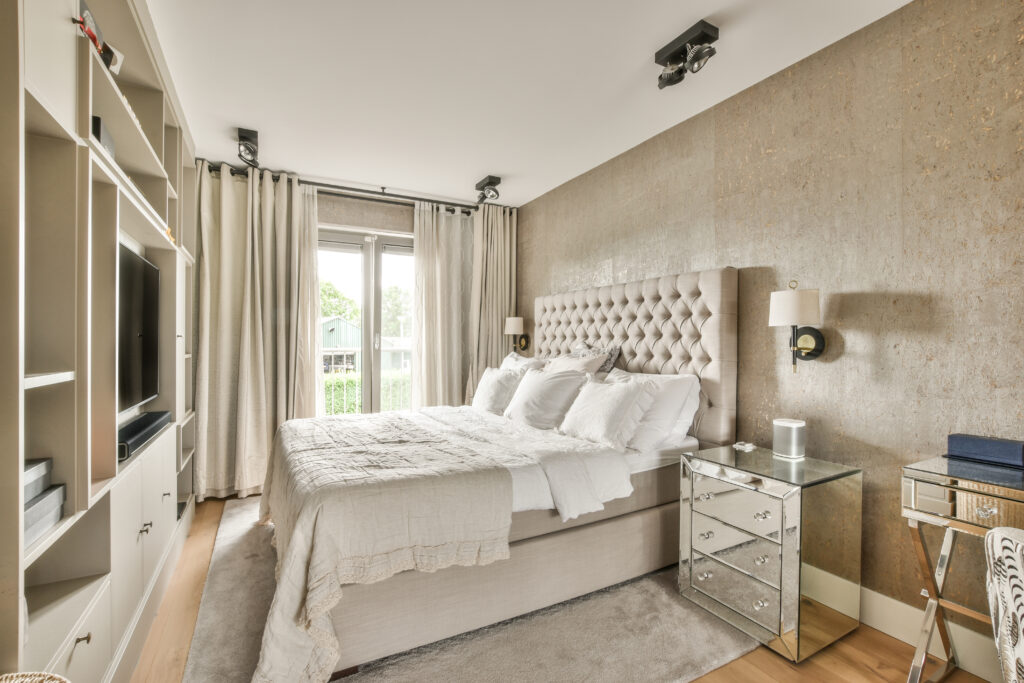
In conclusion, when it comes to bedroom furniture, there is no hard and fast rule that all pieces must match. You can mix and match different furniture styles to create a unique look in your bedroom.
Color coordination is also essential when mixing and matching furniture, as this will help you achieve a cohesive look.
Ultimately, deciding whether or not all bedroom furniture has to match depends on your style preferences. So don’t be afraid to experiment with different combinations until you find something that works for you!
Does all bedroom furniture have to match? Not necessarily – but it’s up to you!

